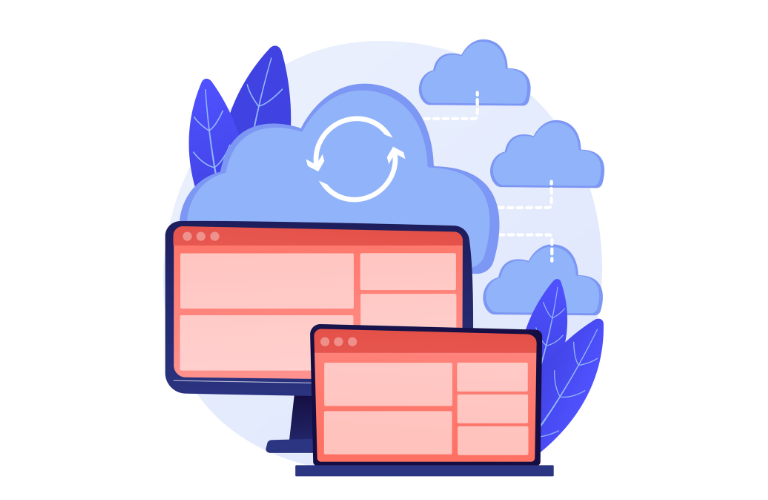Laravel AI predictive analytics is transforming how small applications leverage data to make smarter decisions. By integrating AI APIs into Laravel, developers can forecast user behavior, optimize performance, and enhance user experiences. This article explains how to integrate AI APIs into Laravel for predictive analytics, with a demo of forecasting user engagement.
We’ll cover use cases like subscription retention, practical implementation steps, time-saving shortcuts, and actionable insights to address pain points like slow performance. Whether you’re a beginner or seasoned developer, this guide offers clear, actionable steps to harness Laravel AI predictive analytics effectively.
Table of Contents
Why Use Laravel AI Predictive Analytics?
Predictive analytics uses machine learning to analyze historical data and forecast future outcomes. In Laravel, integrating AI APIs enables small apps to predict user engagement, churn, or market trends. This empowers developers to make data-driven decisions, improving efficiency and user satisfaction. Laravel’s robust framework, combined with AI, simplifies complex data processing, making it ideal for small-scale applications.
Small apps often face challenges like limited resources or slow performance when handling large datasets. Laravel AI predictive analytics addresses these by automating data analysis and optimizing workflows. For example, forecasting user engagement helps apps tailor experiences, boosting retention and revenue.
Benefits of Laravel AI Predictive Analytics
Integrating AI into Laravel offers multiple advantages for small apps:
- Enhanced Decision-Making: Predict user behavior to inform strategies, like targeting at-risk subscribers.
- Improved Efficiency: AI processes vast datasets faster than manual methods, saving time.
- Personalized Experiences: Tailor content or offers based on predicted user preferences.
- Proactive Risk Management: Identify potential churn or bottlenecks before they impact performance.
These benefits help small apps compete with larger platforms by leveraging data intelligently.
Key Components of Laravel AI Predictive Analytics
To implement Laravel AI predictive analytics, you need three core components: data, algorithms, and predictions. Each plays a vital role in transforming raw data into actionable insights.
Data
Data is the foundation of predictive analytics. For Laravel apps, this includes user activity logs, subscription data, or transaction records. High-quality, relevant data ensures accurate predictions. Cleanse data by removing inconsistencies and preprocess it for compatibility with AI models.
Algorithms
Algorithms are the brains behind predictions. Common choices include linear regression for trend analysis or neural networks for complex patterns. Laravel developers can use APIs like Google Cloud AI or IBM Watson to access pre-built algorithms, reducing development time.
Predictions
Predictions are the actionable outputs. For example, forecasting user engagement might predict which users are likely to unsubscribe, allowing proactive retention strategies. Accurate predictions depend on robust data and well-chosen algorithms.
Step-by-Step Guide to Integrate AI APIs in Laravel
Integrating Laravel AI predictive analytics involves connecting an AI API, preparing data, and building a predictive model. Below is a simple implementation to forecast user engagement in a Laravel app, focusing on subscription retention.
Step 1: Choose an AI API
Select a reliable AI API for predictive analytics. Options include:
- Google Cloud AI Platform: Offers robust machine learning tools for forecasting.
- IBM Watson: Provides user-friendly predictive modeling for small apps.
- Microsoft Azure Machine Learning: Scalable for enterprise-level predictions.
For this demo, we’ll use Google Cloud AI due to its ease of integration with Laravel.
Step 2: Set Up Your Laravel Environment
Ensure your Laravel app is ready for API integration. Run these Artisan commands to set up a new project or use an existing one:
composer create-project laravel/laravel predictive-app
cd predictive-app
php artisan serveInstall the Guzzle HTTP client to handle API requests:
composer require guzzlehttp/guzzleStep 3: Configure the AI API
Sign up for a Google Cloud account and create an API key. Store it securely in your Laravel .env file:
GOOGLE_CLOUD_API_KEY=your-api-key-hereAdd the API key to your config/services.php:
'google_cloud' => [
'api_key' => env('GOOGLE_CLOUD_API_KEY'),
],Step 4: Collect and Prepare Data
Gather user engagement data, such as login frequency, session duration, or subscription status. Store this in your Laravel database. For example, create a users_engagement table:
php artisan make:migration create_users_engagement_tableIn the migration file:
Schema::create('users_engagement', function (Blueprint $table) {
$table->id();
$table->integer('user_id');
$table->integer('login_count');
$table->float('session_duration');
$table->boolean('subscribed');
$table->timestamps();
});Run the migration:
php artisan migrateCleanse the data by removing duplicates or outliers using Laravel’s query builder.
Step 5: Build the Predictive Model
Create a service class to handle API requests. Generate it with:
php artisan make:service PredictiveAnalyticsServiceIn app/Services/PredictiveAnalyticsService.php:
namespace App\Services;
use GuzzleHttp\Client;
class PredictiveAnalyticsService
{
protected $client;
protected $apiKey;
public function __construct()
{
$this->client = new Client();
$this->apiKey = config('services.google_cloud.api_key');
}
public function predictUserEngagement($data)
{
$response = $this->client->post('https://automl.googleapis.com/v1/projects/your-project-id/models/your-model-id:predict', [
'headers' => [
'Authorization' => 'Bearer ' . $this->apiKey,
'Content-Type' => 'application/json',
],
'json' => [
'payload' => [
'features' => $data,
],
],
]);
return json_decode($response->getBody(), true);
}
}Replace your-project-id and your-model-id with your Google Cloud details.
Step 6: Create a Controller
Generate a controller to handle predictions:
php artisan make:controller PredictiveAnalyticsControllerIn app/Http/Controllers/PredictiveAnalyticsController.php:
namespace App\Http\Controllers;
use App\Services\PredictiveAnalyticsService;
use App\Models\UserEngagement;
class PredictiveAnalyticsController extends Controller
{
protected $predictiveService;
public function __construct(PredictiveAnalyticsService $predictiveService)
{
$this->predictiveService = $predictiveService;
}
public function forecastEngagement()
{
$data = UserEngagement::select('login_count', 'session_duration', 'subscribed')->get()->toArray();
$predictions = $this->predictiveService->predictUserEngagement($data);
return response()->json(['predictions' => $predictions]);
}
}Step 7: Define Routes
In routes/api.php:
Route::get('/forecast-engagement', [PredictiveAnalyticsController::class, 'forecastEngagement']);Step 8: Test the Model
Test the API endpoint using a tool like Postman or run:
curl http://localhost:8000/api/forecast-engagementThe response will include predictions, such as the likelihood of user churn, based on engagement data.
Use Cases for Laravel AI Predictive Analytics
Laravel AI predictive analytics shines in several scenarios for small apps:
- Subscription Retention: Predict which users are likely to cancel subscriptions, enabling targeted retention campaigns. For example, offer discounts to at-risk users.
- User Engagement Forecasting: Anticipate user activity to optimize content delivery or push notifications.
- Dynamic Pricing: Adjust pricing based on predicted demand, ideal for e-commerce apps.
- Churn Prediction: Identify users at risk of leaving to improve retention strategies.
These use cases help small apps maximize user satisfaction and revenue.
Time-Saving Shortcuts for Laravel AI Predictive Analytics
To streamline development and boost performance, use these shortcuts:
- Cache API Responses: Use Laravel’s caching to store API responses, reducing API calls and improving speed:
$predictions = Cache::remember('user_predictions', 3600, function () use ($data) {
return $this->predictiveService->predictUserEngagement($data);
});- Queue Data Processing: Process large datasets asynchronously with Laravel queues:
php artisan queue:work
- Use Eloquent for Data Prep: Leverage Laravel’s Eloquent ORM to simplify data cleaning and preprocessing.
- Automate Model Retraining: Schedule Artisan commands to retrain models periodically:
php artisan schedule:runAddressing Common Pain Points
Small apps often struggle with slow performance or complex setups. Laravel AI predictive analytics mitigates these:
- Slow Performance: Cache API responses and use Laravel’s query optimization to handle large datasets efficiently.
- Complex Setup: APIs like Google Cloud AI simplify integration, requiring minimal coding.
- Data Quality: Use Laravel’s validation and preprocessing to ensure clean, reliable data.
Ethical Considerations
Ensure ethical use of Laravel AI predictive analytics by addressing:
- Bias Mitigation: Regularly audit data and models to prevent unfair predictions.
- Transparency: Use explainable AI to clarify how predictions are made, building user trust.
- Privacy: Comply with regulations like GDPR when handling user data.
Tools for Laravel AI Predictive Analytics
Choose the right tools to simplify integration:
- Google Cloud AI Platform: Scalable and easy to integrate with Laravel.
- IBM Watson: Ideal for user-friendly predictive modeling.
- Laravel Telescope: Monitor API performance and debug issues.
Explore more tools at Laravel’s official documentation or Google Cloud’s AI resources.
Future of Laravel AI Predictive Analytics
As AI advances, Laravel AI predictive analytics will become more accessible. Small apps can leverage open-source LLMs or platforms like Hugging Face for cost-effective solutions. Combining predictive and generative AI will further enhance app capabilities, enabling dynamic content creation and forecasting.
Conclusion
Laravel AI predictive analytics empowers small apps to forecast user engagement, optimize retention, and make data-driven decisions. By integrating AI APIs like Google Cloud AI, developers can build efficient, scalable solutions. Use the steps, shortcuts, and tools outlined above to implement predictive analytics in your Laravel app. Start today to stay ahead of competitors and deliver personalized user experiences.
FAQs
1. What is Laravel AI predictive analytics?
Laravel AI predictive analytics combines Laravel’s framework with AI APIs to analyze historical data and forecast outcomes like user engagement or subscription retention. It uses machine learning to make data-driven decisions for small apps.
2. How do I integrate AI into a Laravel app for predictive analytics?
Choose an AI API (e.g., Google Cloud AI), install Guzzle HTTP client, configure API keys in Laravel’s .env, collect and clean data, and use a service class to send data to the API for predictions. Check Laravel’s documentation for setup details.
3. What are the benefits of using Laravel AI predictive analytics?
It enhances decision-making, improves efficiency by processing large datasets, personalizes user experiences, and predicts risks like user churn, helping small apps optimize performance and retention.
4. Which AI APIs work best with Laravel for predictive analytics?
Popular choices include Google Cloud AI Platform, IBM Watson, and Microsoft Azure Machine Learning. Google Cloud AI is user-friendly and integrates seamlessly with Laravel for forecasting tasks.
5. Can Laravel AI predictive analytics help with subscription retention?
Yes, it can predict which users are likely to churn by analyzing engagement data, allowing you to target at-risk users with personalized offers or campaigns to boost retention.
6, How can I ensure ethical use of Laravel AI predictive analytics?
Mitigate biases by auditing data, ensure transparency with explainable AI, and comply with privacy laws like GDPR when handling user data to maintain trust and fairness.
7. What tools can simplify Laravel AI predictive analytics implementation?
Use Google Cloud AI for robust predictions, Laravel Telescope for monitoring, and Eloquent ORM for data prep. Caching and queues can also speed up performance.




